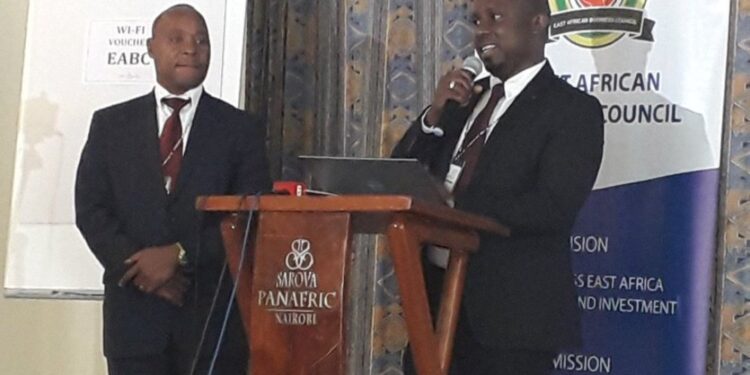In a dramatic turn of events, the East African Community (EAC) has thrown its economic landscape into a whirlwind with the implementation of the new Common External Tariff (CET).
The tarrif, is a measure expected to send import costs soaring. The recently imposed CET, with a staggering maximum tariff of 35%, is a strategic move aimed at shielding local production firms and adding value to the region’s industries.
However, this protectionist stance comes with its own set of complexities and challenges, threatening to disrupt the delicate balance of regional trade and economics.
During a high-stakes webinar titled “Post-Budget 2024/25 – Disparities in the Application of EAC-CET and Impact on EAC Businesses,” Donald Tindamanyire, the Principal Customs Officer for Tariff and Valuation at the EAC Secretariat, delivered the eye-opening revelations.
The event, organized by the EAC Secretariat and RSM Eastern Africa, saw Tindamanyire unveil the contentious decision to adopt the 35% tariff on imports originating outside the trading bloc.
This decision, he claimed, was meticulously crafted to boost revenue by 5.5%, invigorate intra-regional trade, curtail importation, foster value addition, attract foreign direct investment, and generate employment opportunities for East Africans.
Yet, the optimism was quickly dampened by Tindamanyire’s sobering analysis of the non-uniform application of the agreed CET. “For example, in the FY 2024/25, there are 1,956 tariff lines under stays of applications,” he noted with a hint of frustration.
Leading this disjointed charge is Uganda, with an astonishing 901 SOAs, followed closely by Kenya at 816, Rwanda at 116, Tanzania at 89, and Burundi at 24. These SOAs predominantly target products subjected to a 25% import duty, making up 77% of all SOAs, with the remaining 25% aimed at products under the 35% duty bracket.
The most glaring inconsistencies were found in sectors critical to the EAC’s economic aspirations. Cotton, textiles, and apparel sectors lead the pack with 621 tariff lines under SOA, followed by iron and steel, and agro-processing, creating a convoluted web of trade barriers that threaten to stymie the very growth the CET seeks to foster.
Josphat Karanja, the manager of Tax Consulting at RSM Eastern Africa, did not mince words in his assessment of the situation. “The annual stay order applications, which are effective for only one year, lead to uncertainties for manufacturers and traders, thus affecting crucial business decisions,” he said, highlighting the detrimental market distortions caused by the lack of uniform application of the EAC-CET.
Adrian Njau, the acting Executive Director of the East African Business Council, echoed these concerns, pointing out that the previous CET maximum rate was a more manageable 3-band structure with a maximum tariff rate of 25%.
The new 4-band tariff structure, adopted in 2022, with its 35% maximum rate, was intended to promote value addition, regional value chain integration, and protect products sufficiently produced within the region from similar imports outside the EAC bloc.
Products covered by this tariff line include dairy and meat products, cereals, cotton and textiles, iron and steel, edible oils, beverages and spirits, among others.
The East African Business Council’s Vice Chairperson, Simon Kaheru, made an impassioned plea for the uniform application of the EAC-CET to enhance intra-EAC trade, investment, and regional value chains.
He emphasized that the new trading arrangements facilitate intra-trade and create a level playing field in the EAC Customs Territory by providing a uniform tariff structure for products imported outside the EAC bloc. Kaheru called for robust public-private dialogues and partnerships to drive the uniform implementation of the EAC-CET, crucial for boosting intra-regional trade.
The webinar, a veritable gathering of over 100 industry leaders and government officials from across the region, underscored the CET’s vital role in driving intra-regional trade and called for unwavering political commitment to ensure its uniform application.
Key recommendations included building productive capacities in the region, harmonizing private sector positions on the CET, protecting local industries, applying regional duty remission schemes to promote East African manufacturers, developing industrial infrastructure for priority value chains like leather to promote value addition, and increasing awareness of the EAC-CET Version 2022 among both public and private stakeholders.
As the EAC navigates these turbulent economic waters, the uniform application of the CET remains a beacon of hope. The region’s economic future hangs in the balance, and the stakes have never been higher.
The call to action is clear: harmonize tariffs, foster dialogue, and protect the region’s burgeoning industries, or risk falling into a quagmire of economic uncertainty.
Do you have a story in your community or an opinion to share with us: Email us at editorial@watchdoguganda.com












